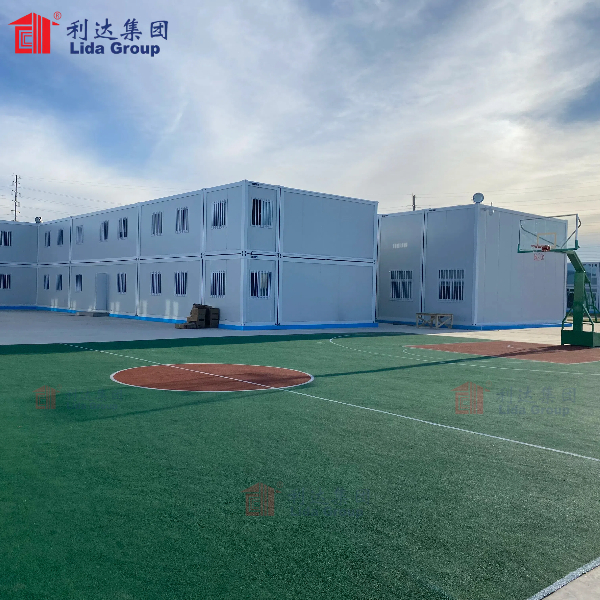Introduction
In an era marked by rapid urbanization, climate change, and growing concerns over sustainability, the need for innovative housing solutions has never been more pressing. Lida Group, a leader in modular construction, has embraced this challenge by developing container houses that are not only cost-effective and versatile but also promote sustainable living. This article explores the sustainable features of Lida Group’s container house designs, their environmental impact, and the various ways they contribute to a greener future.
Understanding Container Houses
What Are Container Houses?
Container houses are structures built from repurposed shipping containers, which are typically made of steel and designed to withstand harsh marine environments. These containers can be transformed into livable spaces through modifications that include insulation, plumbing, and electrical systems. The result is a durable, portable, and customizable living solution that meets the needs of a diverse range of occupants.
The Rise of Container Housing
The popularity of container houses has surged in recent years, driven by several factors:
- Affordability: Container houses are often more affordable than traditional homes due to lower material and labor costs.
- Speed of Construction: The modular nature of container homes allows for quicker assembly, reducing construction time significantly.
- Sustainability: Utilizing repurposed shipping containers contributes to waste reduction and environmental sustainability.
The Sustainability of Lida Group’s Container House Designs
1. Repurposing Materials
One of the most significant sustainable aspects of Lida Group’s container houses is the repurposing of shipping containers. This practice offers multiple environmental benefits:
- Reducing Waste: Shipping containers often end up in landfills after their maritime use. By converting them into homes, Lida Group helps divert waste from landfills.
- Minimizing Resource Extraction: Using existing materials reduces the need for new resources, which can be environmentally damaging to extract.
2. Energy Efficiency
Lida Group prioritizes energy efficiency in its container house designs, incorporating features that minimize energy consumption and reduce the carbon footprint:
- High-Quality Insulation: Proper insulation helps maintain comfortable indoor temperatures, reducing the need for heating and cooling systems. This results in lower energy bills and decreased reliance on non-renewable energy sources.
- Energy-Efficient Appliances: Lida Group integrates energy-efficient appliances into its designs, which consume less electricity and water, contributing to overall sustainability.
- Natural Ventilation: Thoughtful placement of windows and ventilation systems allows for natural airflow, reducing the need for air conditioning and improving indoor air quality.
3. Renewable Energy Solutions
Lida Group encourages the use of renewable energy sources in its container house designs:
- Solar Panels: Many container houses can be equipped with solar panels, allowing occupants to harness renewable energy and reduce their reliance on fossil fuels. This can significantly lower utility costs and promote energy independence.
- Rainwater Harvesting Systems: These systems collect and store rainwater for use in irrigation, sanitation, and even potable water after proper filtration, reducing the demand on municipal water supplies.
4. Sustainable Landscaping
Lida Group promotes sustainable landscaping practices in conjunction with its container house designs:
- Native Plant Landscaping: By incorporating native plants into landscaping designs, Lida Group encourages biodiversity and minimizes water usage, as native plants are typically more resilient to local climates.
- Green Roofs: Some container houses may feature green roofs, which provide insulation, reduce stormwater runoff, and create additional green space in urban environments.
5. Minimalist Living
Container houses naturally encourage a minimalist lifestyle, which aligns with sustainable living principles:
- Efficient Use of Space: The compact nature of container houses encourages occupants to prioritize essential belongings, reducing clutter and waste.
- Lower Consumption: A smaller living space often leads to lower consumption of resources, including energy, water, and materials.
Economic Benefits of Sustainable Living
1. Cost Savings
Lida Group’s container houses offer numerous economic benefits that complement their sustainability:
- Lower Construction Costs: The use of repurposed materials and efficient building techniques reduces upfront costs for homeowners.
- Reduced Utility Bills: Energy-efficient designs lead to significant savings on monthly utility bills, making container living more financially sustainable over time.
- Long-Term Value: As sustainability becomes increasingly important to homebuyers, container houses may appreciate in value due to their eco-friendly features.
2. Job Creation
The rise of container housing can stimulate job creation in various sectors:
- Construction and Manufacturing: The production and assembly of container houses create jobs in manufacturing, construction, and design.
- Sustainable Technologies: As the demand for renewable energy solutions increases, jobs in solar panel installation, energy efficiency consulting, and green landscaping will also grow.
Community and Social Impact
1. Affordable Housing Solutions
Container houses can play a vital role in addressing the global housing crisis:
- Affordable Options: They provide a cost-effective housing solution for low-income families and individuals, helping to alleviate homelessness and housing shortages.
- Temporary Housing: Container houses can be deployed quickly in disaster-stricken areas or for seasonal workers, offering immediate relief and shelter.
2. Community Development
Lida Group’s container houses can contribute to community development in several ways:
- Creating Cohesive Communities: When designed as modular villages, container houses can foster a sense of community among residents, promoting social interaction and support.
- Flexible Urban Planning: Container houses can be integrated into urban environments, providing adaptable spaces that can evolve with community needs.
Conclusion
Lida Group’s container house designs represent a groundbreaking approach to sustainable living. By repurposing shipping containers and integrating energy-efficient features, these homes offer a viable solution to pressing housing challenges while promoting environmental stewardship.
As the demand for affordable, sustainable housing continues to grow, Lida Group is well-positioned to lead the way in providing innovative container house solutions. With a commitment to quality, sustainability, and community engagement, Lida Group is shaping the future of housing, ensuring that sustainable living becomes a reality for many.
In an increasingly complex world, the potential of container houses to foster sustainable communities, create economic opportunities, and address housing shortages is immense. By embracing these innovative solutions, we can move toward a more sustainable and equitable future for all.
Contact Us
Post time: Oct-15-2024


